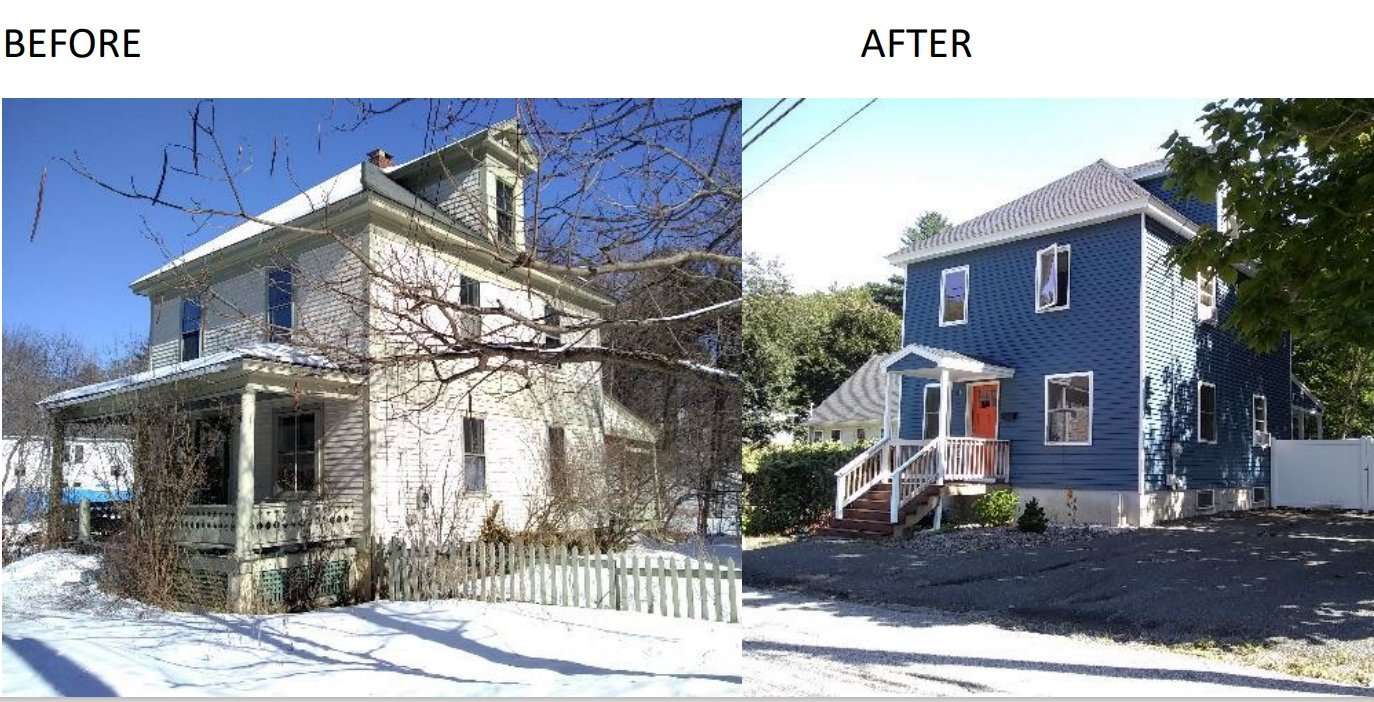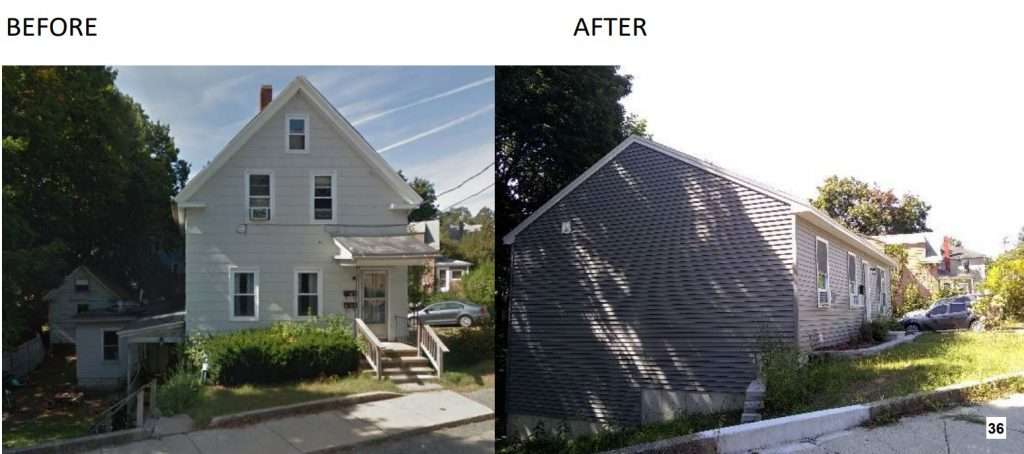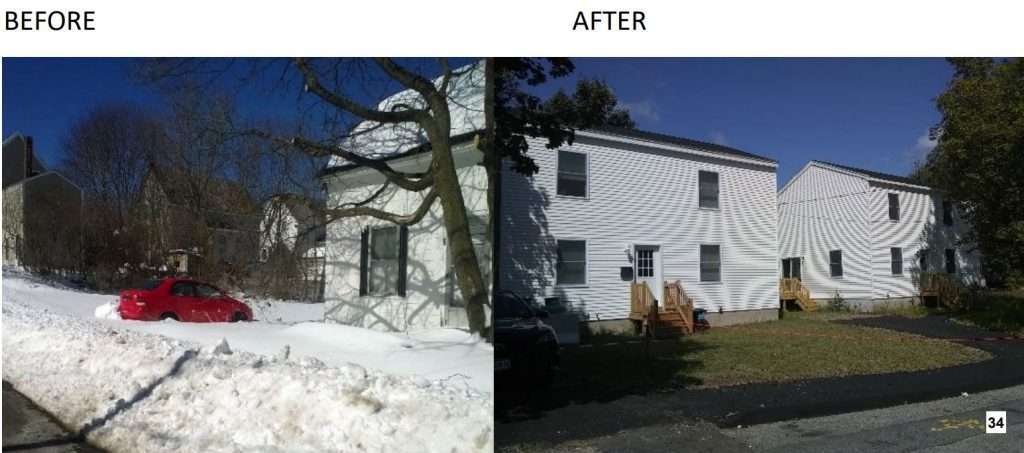Sanford’s Land Bank Authority Creating Safer, Fairer Housing

Sanford’s Land Bank Authority (LBA) has had a positive impact on the quality of Sanford’s housing stock in the five years since its establishment, as shown by increased property values and reduced numbers of vacant and abandoned buildings. Ian Houseal, Director of the LBA, presented these findings and more in his annual report to City Council members at their meeting on September 20, 2022.
The LBA has three main objectives:
- Addressing dangerous buildings that detract from the value of real estate and impact the safety and quiet enjoyment of neighboring people and properties.
- Ensuring there are safe and affordable places to live.
- Expediting the transition of abandoned and foreclosed properties back to value-producing real estate.
To accomplish these objectives, it administers these programs:
- Rental housing licensing with regular and proactive inspections of rental properties. The process ensures that renters have safe and healthy places to live, while it levels the playing field for landlords.
- Vacant building licensing which motivates property owners to bring those buildings back into occupancy.
- The Dangerous Buildings process which is employed as a catalyst for progress on properties that have been abandoned or neglected over a long period of time. This encompasses a revolving fund for redevelopment activities, which include sale of demolished dangerous building lots, rehab of salvageable homes and construction of new infill housing.
Aaron Lederer and Jeannie Wood are the Code Enforcement Officers who perform the inspections on rental properties and vacant buildings. Through the inspection process, they have completed a full inventory of the multi-unit properties in town. There are 815 multi-unit properties in Sanford, comprising 3,114 dwelling units. Mr. Houseal said they have specifically targeted the 6-10 unit buildings for re-inspection this year and are doing it jointly with assessors and building inspectors to get a better idea of the composition of these units. The revenue from the licensing process pays for the Code Enforcement Officers.
The number of Vacant Building licenses has been dropping steadily since the license was instituted in 2018. 79 properties were licensed in 2018 and 71 in 2021. The City Council has approved 67 orders to abate nuisances from dangerous buildings since 2018.
Mr. Houseal illustrated his presentation with before-and-after photos of four of the properties that have been improved by the Land Bank.
- At 10 Brook St., the vacant and dilapidated home was demolished and the land was sold to an abutter
- At 2 Sherburne St. (now Tanguay St.), a property that was tax-acquired several years ago had asbestos removed, was demolished, the land was subdivided into two properties. A new duplex has been built on each one
- At 21 Sherburne in Springvale, the City got title to the property and the long-vacant home has been redeveloped and has a new homeowner
- At 13 State St., the Land Bank partnered with the Sanford Housing Authority and initially planned to rehab the building, but it was determined to be a better candidate for rebuilding. The dilapidated New Englander was replaced with a new ranch, which Mr. Houseal said seems to be catalyzing the neighborhood toward positive change.

The LBA is overseen by the seven-member Land Bank Commission, which is made up of three City Council members and four members of the public who have experience in the housing industry. They meet once a month via Zoom. The current members are:
- Mayor Anne-Marie Mastraccio
- Deputy Mayor Maura Herlihy
- Councilor Becky Brink
- Nicholas Roux
- Rebecca Lapierre
- Joe Sevigny
- Tim Dumont
Dianne Gerry of the Sanford Housing Authority and Realtor John Caramihalis also serve as ex-officio members.
This year the Maine Legislature passed LD1694 creating the Maine Redevelopment Land Bank Authority (MRLBA), which will help Sanford by expediting the foreclosure process. It will also allow municipalities to gain quiet title in one year. Quiet title is a legal process that is used to confirm ownership, fix a title error, or settle an ownership dispute. The MRLBA is expected to take a proactive stance on property redevelopment, specifically former mill buildings which are some of the most problematic properties for many Maine communities. It will also bring environmental regulatory reform to brownfield redevelopment. Mr. Houseal was instrumental in drafting the bill to create the MRLBA.
The full City Council meeting may be viewed on Town Hall Streams here and on YouTube here. The SHA’s power point presentation is available in the Council’s agenda packet here, beginning on page 19.







